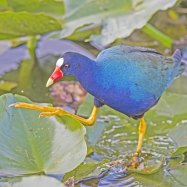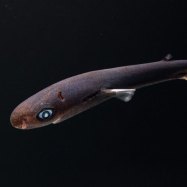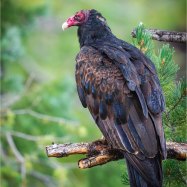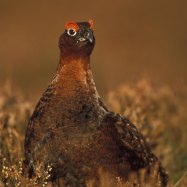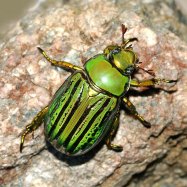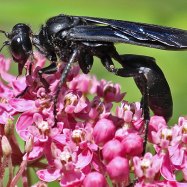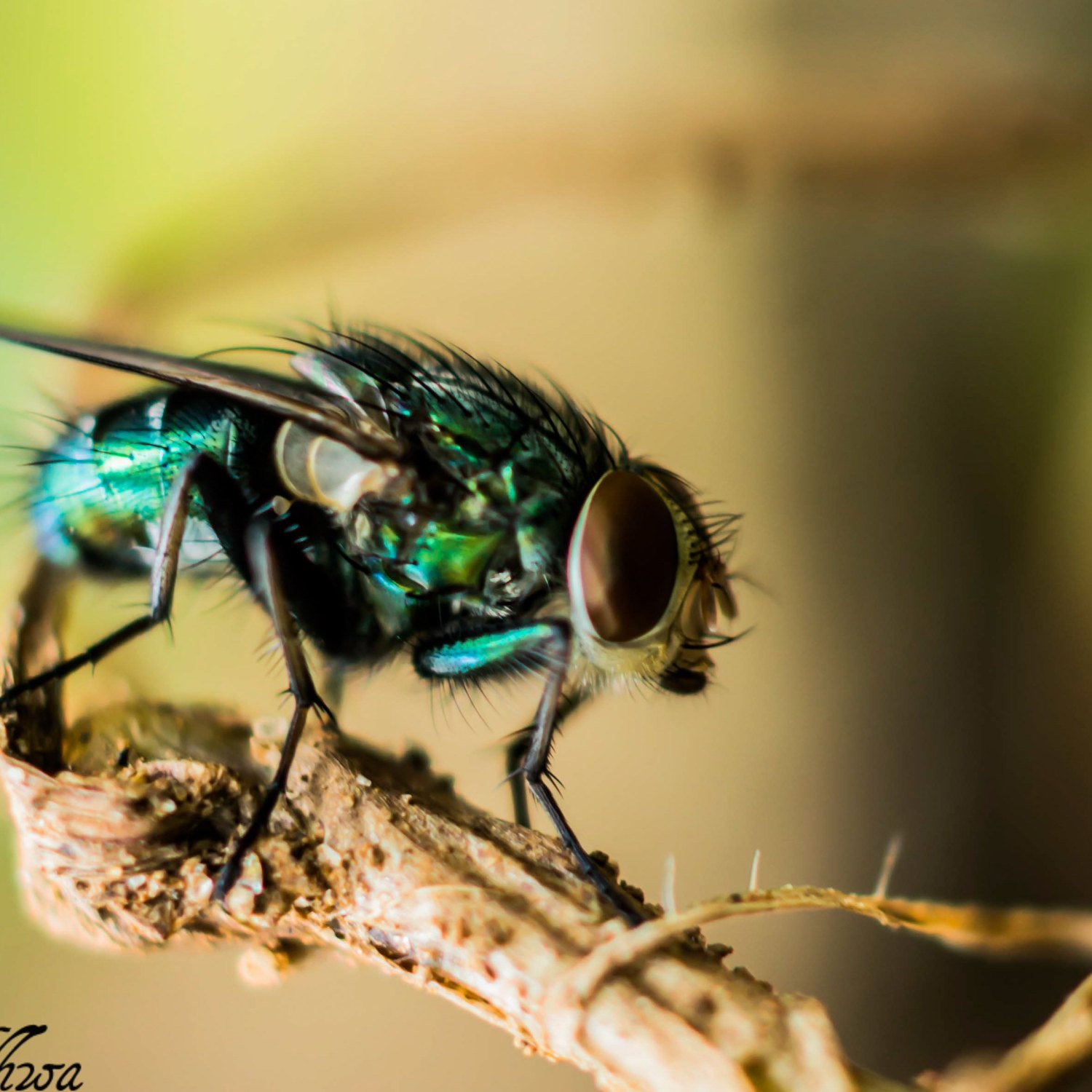
Housefly
6-7 millimeters
Houseflies can be found worldwide, except in Antarctica. They are small and slender, measuring 6-7 millimeters in length. Belonging to the Muscidae family, they have a unique body shape with two wings. Don't let their size fool you, these pesky creatures can be quite a nuisance. Stay on the lookout for these tiny but mighty insects! #AnimalsH #Housefly #Muscidae
Animal Details Summary:
Common Name: Housefly
Kingdom: Animalia
Habitat: Various habitats including human settlements, farms, and urban areas
Uncovering the Secrets of the Housefly: A Small Insect with a Big Impact
The housefly, scientifically known as Musca domestica, is one of the most common insects found in our everyday lives. Despite being small and often overlooked, this tiny insect has a big impact on the environment and human health. In this article, we will delve into the fascinating world of the housefly and uncover some of its unique features and behaviors.The Basics: What Makes a Housefly?
Before we dive into the details, let's start with the basics Housefly. The housefly belongs to the Kingdom Animalia, the same kingdom where humans belong. More specifically, it belongs to the phylum Arthropoda, which includes insects, spiders, and crustaceans. Within the phylum, the housefly is classified as a member of the class Insecta, which means they have six legs, three body segments, and a pair of antennae.The name Musca domestica is derived from Latin, with "Musca" meaning "fly" and "domestica" meaning "domestic." This name is quite fitting as this insect is often found in close proximity to humans, hence its common name, the housefly.
Where to Find Houseflies?
One of the most interesting and unique features of the housefly is its adaptability to various environments. They are found worldwide and can thrive in a wide range of habitats, including human settlements, farms, and urban areas. This cosmopolitan insect is found in every continent except Antarctica, making it one of the most widespread insects in the world.The housefly is not a picky insect when it comes to its surroundings Hoopoe. It can be found in both rural and urban areas, from deserts to forests, and even inside our homes. As long as there is a source of food and shelter, you can expect to encounter a housefly.
The Color and Shape of a Housefly
The housefly may seem like a simple insect with its gray color and small size, but there is more to its appearance than meets the eye. The mature housefly measures a mere 6-7 millimeters in length, with its small and slender body adorned with a pair of large wings. These wings make up most of its body, making it one of the most prominent features of this insect.Aside from its wings, the housefly's body is covered with short hairs, giving it a fuzzy appearance. Its coloration may seem dull, but it serves as a protective camouflage in its natural habitats.
The Secret to a Housefly's Success
One of the reasons for the housefly's widespread presence is its unique ability to reproduce quickly. A female housefly can lay up to 900 eggs in her lifetime, and these eggs can hatch within 24 hours. This rapid reproduction cycle allows for a quick increase in population, making them one of the most abundant insects in the world.But what sets the housefly apart from other insects is its feeding method. Unlike other insects that feed on solid food, the housefly primarily feeds on liquid foods by sponging and lapping them up. This ability makes it a scavenger, looking for sources of food in trash cans, animal feces, and even open wounds. While this may seem gross, their feeding habits serve a crucial role in the environment.
The Housefly: Nature's Recycler
We may think of the housefly as a nuisance, but these small insects play a significant role in the ecosystem. As scavengers, houseflies feed on decaying organic materials, such as plants and animal waste. By doing so, they help break down these materials and return important nutrients to the soil, facilitating the growth of new plants.Moreover, houseflies serve as a vital source of food for other animals like spiders, birds, and reptiles. They are also popular bait for fishing, making them a valuable part of the food chain.
The Dangers of a Housefly Infestation
While houseflies may have a positive impact on the ecosystem, they can also pose potential threats to human health. Due to their feeding habits, houseflies can pick up and transfer harmful bacteria and pathogens from their food sources to humans. These bacteria can cause diseases such as dysentery, typhoid, and cholera.In addition to their potential to spread diseases, housefly infestations can also be a nuisance in homes and businesses. Their constant buzzing and presence can be irritating, and their droppings can be unsanitary and difficult to clean.
Controlling Houseflies: Prevention is Key
The good news is, there are ways to prevent housefly infestations. The key is to eliminate sources of food and breeding grounds for these insects. Properly disposing of garbage, cleaning up spills, and regularly emptying pet waste can greatly reduce the attraction of houseflies.In addition, keeping doors and windows closed, especially in the warmer months, can also help prevent houseflies from entering our homes and businesses.
In Conclusion
The housefly may seem like a simple and insignificant insect, but its impact on the environment and human health is far-reaching. Their adaptability to various habitats and unique feeding habits make them a fascinating subject to study. While they may be a nuisance at times, it's essential to remember their role as nature's recyclers and to take necessary precautions to prevent infestations. After all, these small insects play a big role in maintaining balance in our ecosystem.

Housefly
Animal Details Housefly - Scientific Name: Musca domestica
- Category: Animals H
- Scientific Name: Musca domestica
- Common Name: Housefly
- Kingdom: Animalia
- Phylum: Arthropoda
- Class: Insecta
- Order: Diptera
- Family: Muscidae
- Habitat: Various habitats including human settlements, farms, and urban areas
- Feeding Method: Sponging and lapping up liquid foods
- Geographical Distribution: Worldwide
- Country of Origin: Difficult to determine due to its cosmopolitan presence
- Location: Found in every continent except Antarctica
- Animal Coloration: Gray
- Body Shape: Small and slender with two wings
- Length: 6-7 millimeters
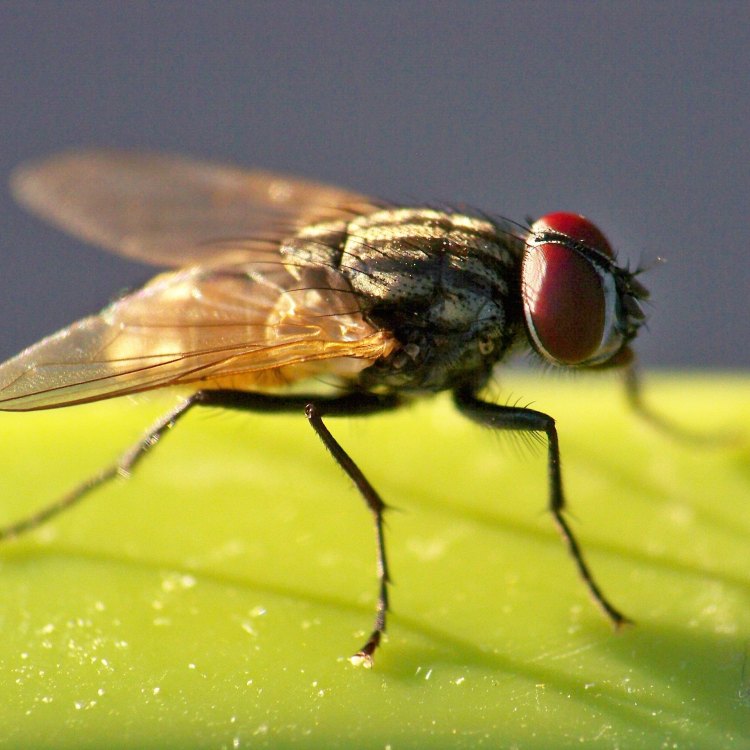
Housefly
- Adult Size: 6-7 millimeters
- Average Lifespan: 2-4 weeks
- Reproduction: Sexual
- Reproductive Behavior: Males court females with buzzing sounds and wing displays
- Sound or Call: Buzzing sound produced during flight
- Migration Pattern: Not migratory
- Social Groups: Not social
- Behavior: Aggregates in areas with abundant food sources
- Threats: Predation, insecticides, and sanitation measures
- Conservation Status: Not evaluated
- Impact on Ecosystem: Houseflies serve as nutrient recyclers by feeding on organic waste
- Human Use: Considered a pest and transmit diseases to humans
- Distinctive Features: Compound eyes, hairy bodies, and proboscis for feeding
- Interesting Facts: Houseflies can taste with their feet and can fly at speeds of up to 5 miles per hour
- Predator: Spiders, birds, bats, and other insectivores
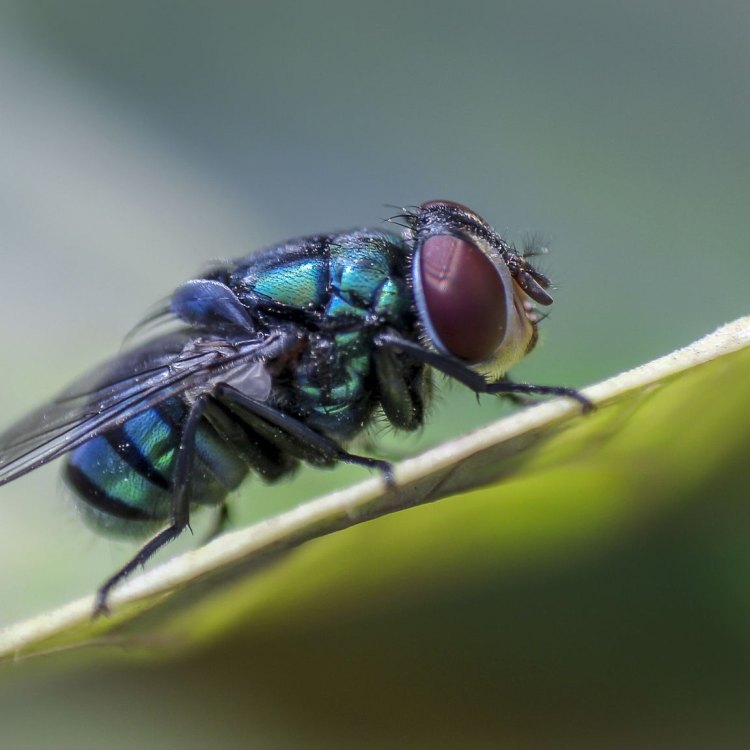
Musca domestica
The Fascinating World of Houseflies: More Than Just Pesky Pests
When we think of houseflies, the first thing that comes to mind is often annoyance and disgust. These tiny insects seem to always find their way into our homes, buzzing around and landing on our food. But beyond their pesky reputation, houseflies have a fascinating and complex world that often goes unnoticed by humans. From their unique reproductive behavior to their crucial role in nutrient recycling, let's take a closer look at these tiny creatures and discover the many interesting facts about them PeaceOfAnimals.Com.The Adult Housefly: Small But Mighty
At only 6-7 millimeters in size, houseflies may seem insignificant. But don't let their small size fool you, these insects are mighty in their own ways. Houseflies typically have a lifespan of 2-4 weeks, during which they can lay up to 500 eggs. This exceptionally high reproductive rate is partly why these insects are so common and widespread.Reproductive Behavior: A Courtship Like No Other
Unlike many other insects, houseflies engage in sexual reproduction. However, their courtship behavior is quite unique. Male houseflies use buzzing sounds and wing displays to attract potential mates. They also release a pheromone that signals their readiness to mate. Once a female has been successfully courted, the two will engage in a brief mating session, after which the female lays her eggs Hammerhead Shark.The Buzzing Sound: More Than Just Annoying
We're all familiar with the buzzing sound that houseflies make while flying around. But did you know that this sound serves a purpose beyond just being annoying to humans? The buzzing sound is produced by the rapid movement of the fly's wings, and it signals to other flies that an area has abundant food sources. This is why you often see a swarm of flies around a garbage bin or food waste.Not Migratory but Aggregates in Certain Areas
Unlike other insects, houseflies are not migratory, and they do not travel long distances. Instead, they tend to stay in one location where there is a constant food source. This is why you will often find a large number of flies in a specific area, such as a dumpsite or a barn.Not Social: A Preference for Solitude
Many insects, such as bees and ants, are known for their highly social behavior, with individuals working together for the good of the colony. However, houseflies are solitary creatures and do not form social groups. They prefer to be on their own, except during mating and when gathering in areas with abundant food sources.Threats to Houseflies: Predators and Human Intervention
Despite their high reproductive rate and widespread presence, houseflies are not invincible. They face numerous threats, including predation by spiders, birds, bats, and other insectivores. Additionally, the use of insecticides and sanitation measures, such as proper waste management, can also greatly reduce their population.Not Evaluated for Conservation Status: An Abundant Species
Unlike many other animals, houseflies have not been evaluated for their conservation status. This is mostly due to their abundance and widespread distribution. However, it is important to note that their role in nutrient recycling is crucial for maintaining a healthy ecosystem.Impact on the Ecosystem: More Than Just Annoying Pests
While houseflies may be considered pests by humans, they play a vital role in the ecosystem. These insects serve as nutrient recyclers, feeding on organic waste and converting it into nutrients that can be absorbed by plants. In this way, they are essential for maintaining a healthy ecosystem and should not be underestimated.Human Use: More Than Just a Source of Discomfort
Despite their importance in the ecosystem, houseflies are also considered pests by humans. They are often associated with the spread of diseases, as they can carry pathogens on their bodies and transmit them through contact with food and surfaces. As a result, controlling the housefly population is crucial for maintaining human health.Distinctive Features: What Sets Houseflies Apart
While many associate houseflies with their annoying buzzing sound and hairy bodies, they have other distinctive features that are often overlooked. One of the most notable is their compound eyes, which are made up of thousands of individual lenses and allow them to have a wide field of vision. They also have a long, slender proboscis for feeding, which can be extended to reach food sources.Interesting Facts: More Than Meets the Eye
Houseflies are full of surprises and interesting facts that most people are unaware of. For example, did you know that they can taste with their feet? This is because their feet have tiny taste receptors that help them determine if a surface is edible. Additionally, houseflies can fly at speeds of up to 5 miles per hour, which may not seem fast to us but is quite impressive for such small insects.Predators: A Constant Threat to Houseflies
As with any living organism, houseflies have several natural predators that keep their population in check. Some of their main predators include spiders, birds, bats, and other insectivores. These predators play a crucial role in maintaining a balance in the ecosystem and are a constant threat to the housefly population.In Conclusion
In the grand scheme of things, houseflies may seem insignificant. But as we have learned, they are far more than just annoying pests. These small insects have a unique reproductive behavior, play an essential role in nutrient recycling, and face constant threats from predators and human intervention. While they may not be evaluated for their conservation status, it is important to recognize their importance in the ecosystem. So next time you see a housefly buzzing around, take a moment to appreciate its unique features and the important role it plays in the world around us.

Uncovering the Secrets of the Housefly: A Small Insect with a Big Impact
Disclaimer: The content provided is for informational purposes only. We cannot guarantee the accuracy of the information on this page 100%. All information provided here may change without prior notice.


